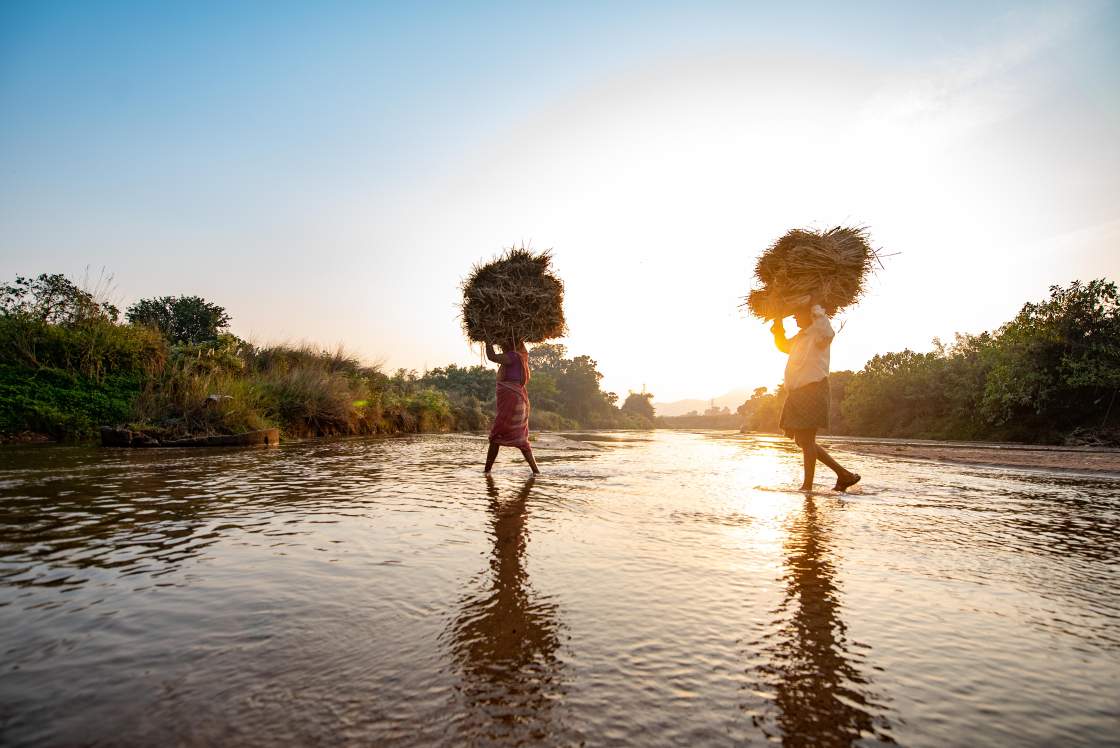Odisha’s growing labour migration has significantly altered the economic and social landscape in home villages. To help migrants and their families, Gram Vikas outlines the necessary laws and measures.
According to a new study on migration in South Asia’s climate-sensitive regions, more households are turning to labour migration as a means of subsistence. This enables individuals to achieve their goals by spreading their risks and diversifying their incomes. The study makes a crucial distinction between migration for coping and movement for adaptation, or, alternatively, between migration for growth and migration out of misery. The latter—opportunistic and aspirational migration—is the subject of this article. Our work with immigrant communities in Odisha has led us to believe that the degree of control an immigrant has over the decision to migrate is what distinguishes aspirational migration from distress migration.
Migration to the southern Indian states, particularly Kerala, has recently increased from the hilly, Adivasi-dominated districts of Kandhamal and Kalahandi in southern Odisha. Men from the Daringbadi block of Kandhamal started making the trip to Kerala in the late 1990s to work as unskilled labourers in educational and other facilities. Kerala migration has become increasingly popular over the past 25 years in the area.
We conducted four empirical studies covering one block each in the Gajapati, Ganjam, Kandhamal, and Kalahandi districts between 2019 and 2021 to better understand the profile of migration from southern Odisha.
We discovered that between 18 and 31% of households at this time had at least one member who had left Odisha in search of employment. The majority of migrants were at their work locations (destinations) for longer than six months at a time, with less than 20% of this migration being seasonal migration lasting less than six months. This pattern indicates the economic benefits of migration.
The good news
This type of migration has significantly altered the social and economic climate in the source regions.
The caste factor
In terms of the type of labour done and the migration locations sought, caste is a significant factor in opportunistic migration from rural Odisha. According to a study done in four Indian towns, newcomers from dominant castes find it simpler and faster to land work than their historically underprivileged counterparts.
Caste also has a significant impact on the kinds of benefits that come with migration. Dalits and Adivasis are overrepresented in short-term, seasonal migration patterns, also known as “coping,” while dominant caste groups are overrepresented in semi-permanent and permanent migration patterns, also known as “accumulative,” where they benefit from both social and economic gains. This has been demonstrated through both micro- and macro-level analyses.
Here are two major conclusions:
Where migrants can find work is heavily influenced by prevailing social relationships.
There has been a migration route between Ganjam and Surat for more than eighty years. The Surat power loom industry employs an estimated 7 lakh migrants from the Ganjam area. Our interactions with migrants demonstrate that, in contrast to SC and ST communities, general caste and OBC households account for the majority of this migration.
In Surat, immigrants almost completely rely on their social capital and connections with friends who currently work there to secure jobs. Because of this, it is challenging for migrants from SC and ST to get employment there. Instead, they favour careers in the hotel and construction industries in the southern states. Even if the wages are greater in Tamil Nadu and Kerala, the workers there report experiencing less caste-based discrimination.
The caste equations for families back home have changed over time due to aspirational migration.
Consider the situation of Ananta Uthamsingh and his brother Sumanta, who reside in the Daringbadi block neighborhood’s Budikia village. The brothers moved to Pune in 2003 in search of employment and worked in the hospitality and food and beverage sectors. Both people moved back home in 2017 with the intention of starting a business and taking care of their families.
Being a scheduled caste, they were wary of opening a business in their own community for fear of retaliation from the dominating castes there.
They had observed how public boycotts had caused financial losses and eventually the demise of other Dalit-run enterprises. With the assistance of neighbourhood Dalit leaders, the brothers eventually overcame their reservations and opened a restaurant called Jihoba Taaza Tawa in the nearby market of Brahmunigaon. They now make a monthly profit of INR 45,000 thanks to the skills they learned in Maharashtra, and they have purchased some land to eventually build a hotel and a restaurant.
enhanced standard of living
A community’s attitude and perspective toward its own aspirations and development are greatly influenced by this flow of ideas, behaviors, and norms, known as social remittances.
One of the most obvious types of social remittances in the areas we serve with is social capital. We’ve noticed that immigrants have a better social status because of their higher wages and travels to far-off areas with diverse cultures. The standards of age and gender appropriateness, neighbourliness, and community involvement, goals for socioeconomic mobility, and patterns of civic and political participation all shift as a result of this throughout time.
Additionally, government policies and programmes should assist civil society organisations in their efforts to promote safe and respectable migration as a vital source of income for communities. Addressing these issues is crucial to addressing the challenges that climate change has posed to the lives and livelihoods of people in southern Odisha’s hilly and isolated regions.

